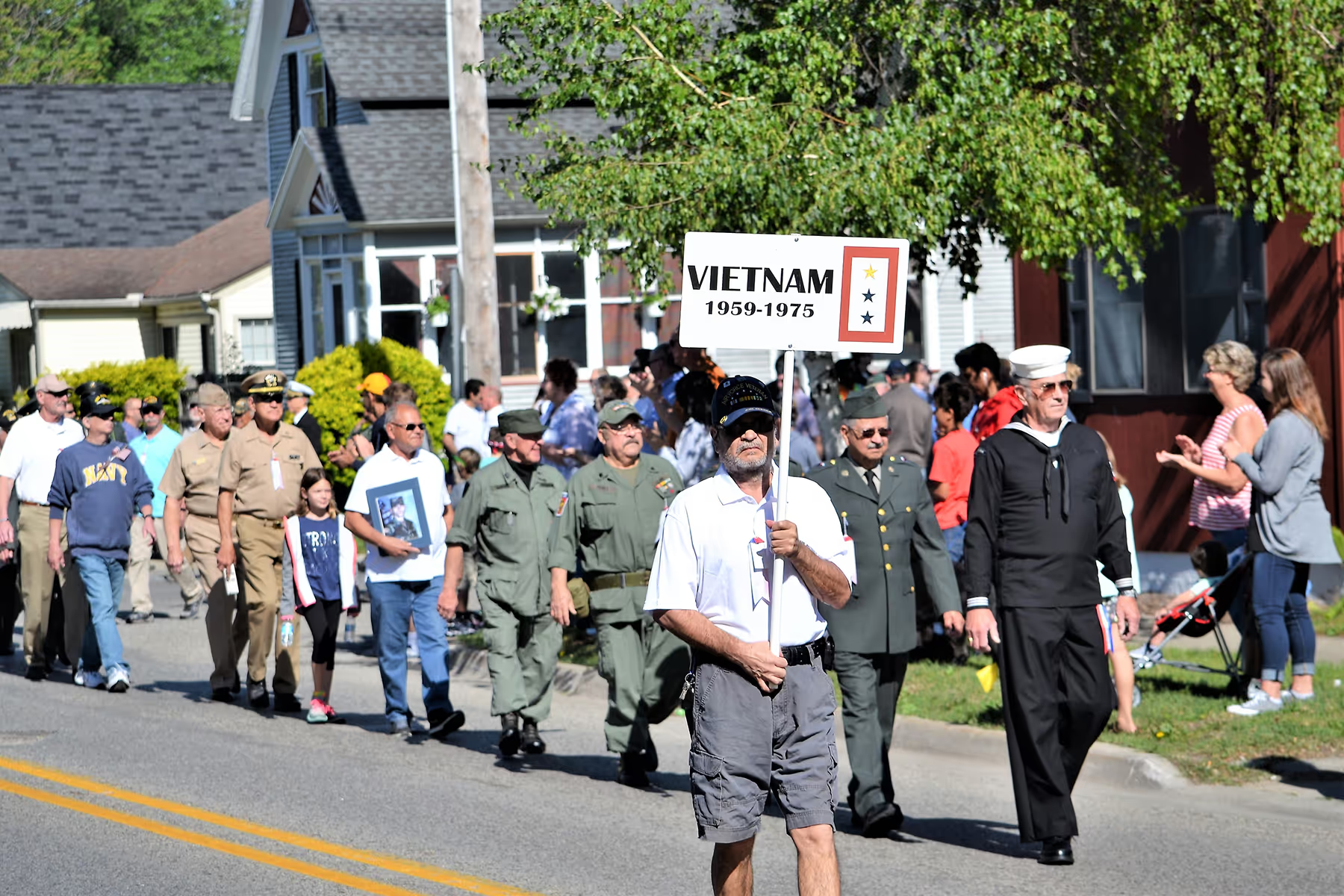Although veterans’ diagnoses and symptoms may be similar to those of your non-veteran patients/clients, the role of military service and veteran status can present unique risks, as well as impact treatment and communication approaches.
According to the US Department of Veterans Affairs (VA), more than 1.7 million veterans received treatment in a VA mental health program in 2018. There is a popular misconception that poor mental health is solely predicted by combat exposure. The reality is that veterans who did not serve in combat zones or were never even deployed away from their military home base may still have service-connected mental health conditions, although generally at lower rates than those who did serve in combat zones.
For veterans who have served in combat zones, the primary predictors of adverse mental health include combat exposure, the number of combat deployments, gender, and non-combat deployment stressors—stressors that are due to deployment away from home, but not due to combat itself. The active-duty Army has the highest rate of mental health conditions, followed by the Air Force, Navy and Marines. The Navy and Marines have historically had similar rates.
POSTTRAUMATIC STRESS DISORDER (PTSD)
Of course, not all veterans who are exposed to combat or other traumatic military experiences are diagnosed with PTSD. Research suggests that enlisting at a younger age, prior traumatic experiences including during childhood, and pre-enlistment education level increase the risk for PTSD in service members or veterans. It is important to keep in mind that veterans may have been exposed to traumas multiple times while in the military.
What You Should Know About Service-Connected Disabilities
An important component of treatment of veterans is to understand the significance of the concept of a service-connected disability and its classification. The service-connected classification is important because it can determine a veteran’s compensation and can establish eligibility for state and federal healthcare and resources for veterans and their dependents.
A service-connected disability is not necessarily a result of combat or other military mission. Any illness or injury that has occurred or was aggravated when someone was on active duty or during active service duty training is classified as service connected. In addition, these conditions do not have to be directly related to military duties, to the conditions of service, or have occurred during “work” time.
Some mental health conditions can be linked to activities or tasks performed during the course of military duties such as trauma from combat, rescue missions, or training. However, other mental health conditions that may occur while they are on active duty or during the timeframe when they have been called to active duty may be classified as service connected.
The History of War and PTSD
Descriptions of what we now understand to be psychological symptoms linked to military-based trauma can be found throughout the history of war. What we now call PTSD has been called “nostalgia,” “soldier’s heart,” “irritable heart,” “shell shock,” “battle fatigue,” “combat stress reaction,” and “post-Vietnam syndrome.” At times, a diagnosis has been seen as a sign of weakness or a character flaw and has elicited ridicule, stigmatization or denigration; at other times, a diagnosis has elicited sympathy.
Today’s Veterans and PTSD
In the wake of the Vietnam War, PTSD among returning troops and veterans was tragically overlooked, was initially referred to as post-Vietnam syndrome and was not officially recognized as a mental health condition until 1980 with the publication of the third edition of the Diagnostic and Statistical Manual (DSM-III), five years after the end of the Vietnam war, but more than two decades after the war had begun. We see this oversight in the faces of homeless Vietnam veterans in our cities daily.
As previously mentioned, we know more about the mental health and behavioral health of post-9/11 veterans than previous generations of veterans. The rate of PTSD in post-9/11 veterans is higher than among previous generations of veterans, which may be in part due to more vigilant surveillance and screening of this cohort compared to their earlier counterparts. In addition, multiple deployments and lengthier deployments have contributed to the higher rate. Asking a post-9/11 veteran client about the length and number of their deployments provides additional information about their PTSD risks.
We do not know what the long-term rates will be. However, we do know that the stigma surrounding PTSD and other mental health diagnoses has impeded the current generation of veterans from seeking care, thus the rates may be even higher than we know.
It is important to place PTSD symptoms in the context of a veteran’s experiences:
Reliving or re-experiencing the traumatic event:
For a veteran this may be reliving or re-experiencing multiple incidents including training exercises that went awry, perilous humanitarian or rescue missions, combat experiences, and/or sexual assault. Triggers can include loud noises, witnessing a scene that is reminiscent of what they saw during a traumatic military experience or experiencing a new traumatic event. Because of urban combat in recent wars and the interactions with civilians, even seeing children laughing or playing with a soccer ball can be triggers. This may induce an overly vigilant or guarded response, a preoccupation with danger, or a fixation with being prepared for whatever may occur in the future.
Repeated exposure to disturbing television images or news stories about war:
This repeated exposure has been found to be a risk for developing PTSD or worsening of PTSD symptoms, particularly for those veterans who are following the news closely and viewing coverage that is reminiscent of their own experiences. Despite the public’s assumption that displays of patriotism are ways to honor veterans, research has found that for some veterans, emotional gatherings replete with American symbols can be a risk for worsening or recurrence of PTSD symptoms.
Avoiding situations that may remind someone of the event:
Veterans may not only avoid crowds but may also avoid situations that feature loud noises reminiscent of traumatic military experiences. The classic example is a veteran avoiding Fourth of July fireworks displays because they sound like explosions or gunfire. In addition, while customarily we think about a PTSD patient avoiding something that reminds them of a singular traumatic event, keep in mind that your veteran client may have experienced multiple traumatic events during military service and this cumulative trauma may lead to multiple avoidance responses.
Negative changes in feelings about oneself, others or beliefs:
For veterans, negative self-images and difficulty forming relationships may be influenced by how they responded during traumatic events in the military, especially if they feel they failed to respond adequately to events that harmed others.
Hyperarousal:
As with the other symptoms, a veteran’s difficulties sleeping or concentrating, startle response, or their avoiding sitting with their back to a door or window may be due to cumulative trauma. These responses may also correspond to the actual traumatic events if their trauma occurred while they were sleeping or there was an element of surprise during combat. This can make them determined to not be caught unawares again.
THE CLINICAL TRIAD: TBI, PTSD, AND PAIN
PTSD has a relationship with traumatic brain injury (TBI) and chronic pain as part of what can be referred to as “the polytrauma clinical triad.” TBI symptoms such as sleep problems, trouble with memory and concentration, depression, anxiety, and irritability may overlap with those of PTSD. In addition, the chronic pain that may result from a TBI has also been associated with PTSD. A 2017 study found that 80 percent of Vietnam veterans with PTSD reported chronic pain. This triad is an illustration of the complexity of veteran health conditions and the importance of a multi-specialty approach to veteran health assessment and care.
Recommended Reading: Traumatic Brain Injury among Veterans: A Toolkit for Behavioral Health and Social Service Providers
This Toolkit provides a framework of understanding traumatic brain injury (TBI) from a community behavioral health and social service perspective.
DEPRESSION AND ANXIETY DISORDER
Research has found that the rates of depression and anxiety in Korean and WWII veterans are lower than rates in their general peer population. Vietnam era veterans, the largest population cohort have rates of depression higher than their non-veteran counterparts as well as compared to Korean or WWII veterans.
However, research focusing on younger veterans tells us a different story. Studies of post-9/11 veterans who served in Iraq have found elevated prevalence of not only PTSD but of major depression and generalized anxiety disorder after they returned home. In addition, difficulty reintegrating into civilian life has also been found to be a risk for depression in post-9/11 veterans.
MORAL INJURY
Moral injury (MI)—defined as engaging in or witnessing actions that conflict with one’s core moral beliefs—has long been found to influence veteran mental health. Psychiatrist Dr. Jonathan Shay, who was the first to conceptualize MI in US veterans based on interviews he and his colleagues conducted with Vietnam veterans in the 1990s, describes it as “the soul wound inflicted by doing something that violates one’s own ethics, ideals or attachments.”
Researchers have derived three dimensions for MI:
- Acts committed by others.
- Acts committed by oneself.
- Perceived betrayal by someone else.
For veterans, especially those who have served in combat, their military experiences may have included witnessing or engaging in actions or events that violated their core moral beliefs. In other instances, a veteran may have felt betrayed by the commands or actions by trusted superiors that jeopardized the lives of other people or may have felt personal guilt over their own decisions that affected their comrades’ survival.
It is important to understand that just as with other mental health outcomes in veterans, MI is not present solely in combat veterans. Ethical and moral challenges veterans have faced are not confined to combat but can manifest during other aspects of military service. Non-combat experiences such as rescue missions and training exercises can also lead to MI. In addition, sexual assault or race-based trauma, which are discussed in later sections, can lead to MI.
Although MI is often associated with PTSD, more recently researchers have identified it as a distinct construct based on the observations that veterans not diagnosed with PTSD still exhibit great suffering. For example, the PTSD avoidance symptom is understood to be avoiding the fear from trauma, while those suffering from moral injury are avoiding shame triggers. It is a complex framework that includes more general poor mental health and behavioral health outcomes including self-harm and substance use. A recent report on MI pointed out: “What is known is that across the world, those suffering from greater moral injury have difficulty addressing their internal conflicts and that a failure to do so can lead to somatic symptoms, withdrawal from social interaction, unhealthy relationship functioning, and risky or self-destructive behavior.”
A veteran may feel feelings of guilt or shame about events that transpired during their service making it difficult to discuss their own MI. The lack of response by some veterans to PTSD treatments has motivated researchers to understand MI better and develop therapies. The Impact of Killing, a recently developed trauma treatment intended to explicitly address the impact on veterans of killing in combat, addresses MI with a focus on self-forgiveness and atonement.
Listen to Shannon, Navy Veteran, discuss the impact of guilt. Content warning: descriptions of violence and strong language. (1:41)
SUBSTANCE USE AND DEPENDENCE
More than 20 percent of veterans are estimated to have a substance use disorder (SUD) and 10 percent of veterans returning from Iraq or Afghanistan are estimated to have an alcohol or drug-use problem. In addition, there is a correlation between PTSD and a SUD. One-third of veterans who have been diagnosed with PTSD also have sought treatment for a SUD and combat veterans who have both PTSD and alcohol problems tend to engage in binge drinking. TBI is also linked to substance abuse and substance abuse is four times more common among women with TBI than men.









